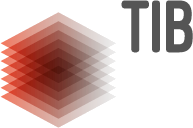21. yy. Mimari Temsil ve Tektonik Söylemlerinde Süreç ve İnşanın Temsil Ötesi Rolü
Süreç ve İnşanın Temsil Ötesi Rolü
DOI:
https://doi.org/10.14744/tasarimkuram.2022.25338Keywords:
Architectural representation, space-time, self-tectonics, construction, non-representational theoriesAbstract
Problem: Digitalization is one of the most significant milestones in technological history of the world. After this development, which first affected the representations, and then the production methods, some problems related to representation and tectonics emerged in architecture. The first of these problems is that the object (end- product) oriented approach in architecture. Material-based tactile qualities in architecture have disappeared in connection with the emergence of the understanding of designing as an object in architecture. However, architecture is a whole of creative processes that enable it to gain tectonic expression. Processes in architecture are generally classified as design, construction and use. Since the construction process is a process where materials and techniques are brought together, it creates an important area of influence in terms of design. The ways in which materials and techniques are brought together have been called tectonics in the history of architecture. Therefore, the divergence of processes has revealed the tectonic problem, the result of the loss of tectonic expression. Architectural tectonics that has transformed after digitalization reinterpreted many times, but it is clear that a new interpretation is needed today. Changings are proof of a quest that tries to overcome the object-oriented attitude in architectural design today based on the scientific and philosophical background that firstly occurred in art and representation. As a result, trends such as designing the design process have emerged. Production tools and innovative materials also affect the concept of designing the process. With the development of the science of cybernetics, the spectacle object has been abandoned in art. The interaction concept that emerged from these efforts has gained importance in architectural circles. This situation, observed in contemporary architectural examples, can be understood from the temporal tectonics of construction representations. It is possible considering these two concepts, tectonic and representation, together, with the connection between construction and them. Concepts that point to two different orientations as material and conceptual reveal that they inherit the same binding interface, viz time when examined their historical development today. This interface, which is seen through animate and inanimate forces in tectonics and through digitalization in representation, has been tried to be explained with the phenomenon of movement as an expression of time in philosophy. Aim: This research aims to decipher issues kind of why digitalization blurs the lines between processes, how digitalization reshapes design and representation methods, and how other transformations of material production in architecture are related to temporality in digital representation tools. In this context, it is significant to understand the development of the time concept that emerged in architecture and to show that today’s tectonics are temporal. Additionally, related examples present the way of inclusion of construction to the design by designing the process. Method: Initially, the historical development of the time concept related to art and science was examined. For creating a conceptual dictionary partnerships were discovered between four current examples that remained visionary or applied. These examples are respectively: robotic museum, geotube tower, organic skyscraper and finally S.M.A.R.T. Independent experiments were conducted in digital and physical environments to show that tectonic and representation, two determinants of construction in physical and digital space, can coexist concerning the created concepts. These experiments combined with the multifarious methods of non-representational theories that deal with process approaches in an interdisciplinary manner. Materials for the physical experiment were determined and the process was photographed at regular intervals. Rhinoceros grasshopper software and physarealm plugin were used for the experiment in the digital space. The experiment was started at certain intervals and the process was recorded as digital picture files. Findings: Whereas observed the designed process in all sample projects, the architectural result contained a planned spontaneity. The concepts of spontaneous tectonics revealed by examined examples are system, actuality, re-production, interactive contact, and emergence. Such tectonics are named as self-tectonics. Although the spatial characteristics of the experimental studies based on these concepts differ due to the fact that one is physical and the other is digital, process characteristics have occurred in both. The findings have shown that the understanding of objects in architecture stems from the understanding of design independently of technological developments and especially from digitalization. It turns out that the discovery of process properties is more about the design approach than the technology used.



















